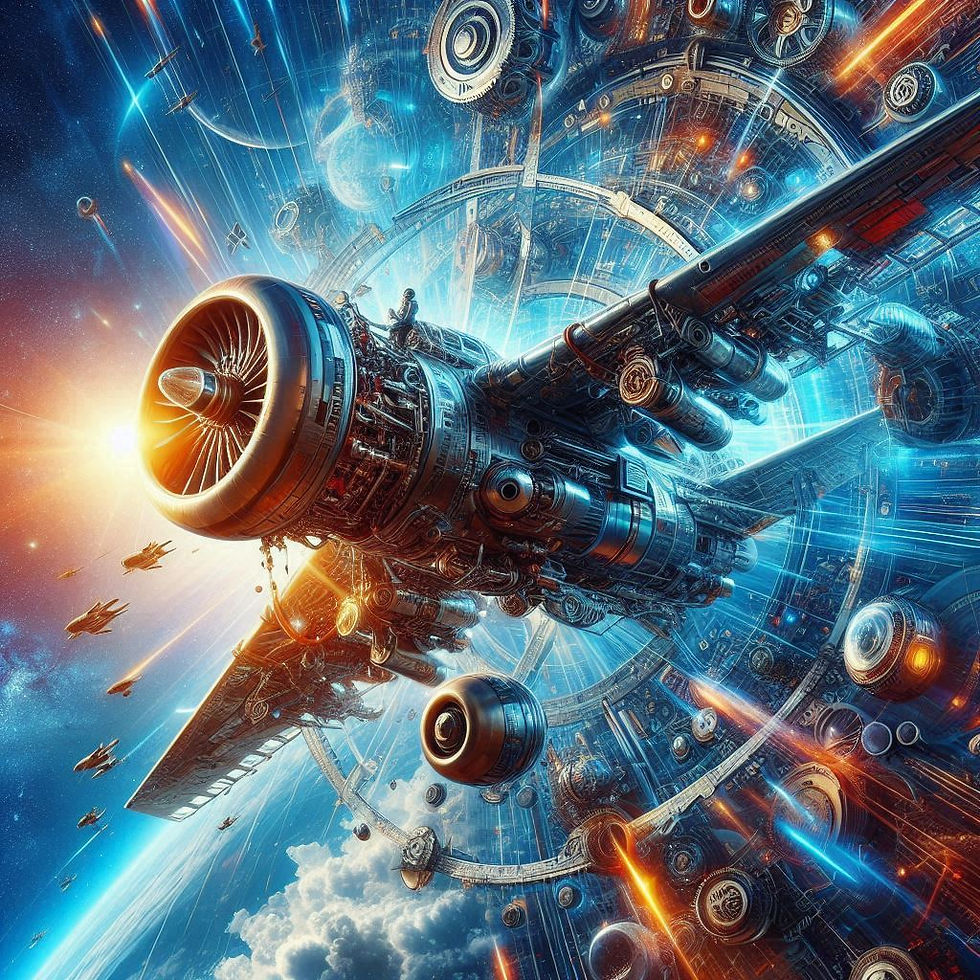Exploring Aeronautics: Unraveling Its Origins, Evolution, and the Visionaries Behind the Skies
- Franco Arteseros
- Jun 20
- 4 min read


Aeronautics is the science and practice of designing, constructing, and operating aircraft. This fascinating field encapsulates not only the technical aspects of flight but also the dreams and aspirations of humanity to conquer the skies. From its roots in ancient concepts of flight to the advanced technologies of modern aviation, aeronautics has evolved significantly over the centuries.

As we delve into aeronautics, we explore its origins, how it works, and examine the visionaries whose contributions have shaped its history. Join us on this informative journey through time, as we uncover the evolution of aeronautics and contemplate its future.
What is Aeronautics?

Aeronautics refers to the study and practice of flight and the design of flying vehicles. It encompasses a wide range of disciplines, including aerodynamics, structural analysis, propulsion, and materials science. At its core, aeronautics aims to understand the principles of flight, allowing for the development of aircraft that can safely and efficiently traverse the skies.

By leveraging physics and engineering principles, aeronautics informs everything from the design of commercial airliners to military jets and even spacecraft. The ultimate goal is to enhance the efficiency, safety, and comfort of air travel worldwide.
How Does Aeronautics Work?

Aeronautics is grounded in several key principles and technologies. First and foremost, it relies on the basic forces of flight: lift, weight, thrust, and drag.
Lift, Weight, Thrust, and Drag
Lift is the upward force that enables an aircraft to rise into the air, primarily generated by the wings.
Weight is the force exerted by gravity, pulling the aircraft downwards.
Thrust is produced by the aircraft's engines, propelling it forward.
Drag is the resistance encountered as the aircraft moves through the air.
The combination of these forces is meticulously calculated and balanced during the design and operation of aircraft to ensure safe and efficient flight.
In addition to these forces, aeronautics also utilizes sophisticated technology. This includes advancements in materials, such as lightweight composites, and innovations in avionics—the electronic systems used in aircraft and spacecraft.
Origins of Aeronautics
The history of aeronautics dates back centuries, finding its roots in humanity's fascination with flight. Early attempts can be traced to myth and lore, such as the story of Icarus in ancient Greek mythology, who crafted wings made of feathers and wax.

One of the earliest practical implementations of flight technology was in the invention of the hot air balloon by the Montgolfier brothers in 1783. Their achievement marked a pivotal moment in the evolution of aeronautics, showcasing the potential for human flight.

The late 19th and early 20th centuries saw rapid advancements in aerodynamics, leading to the development of powered flight. On December 17, 1903, the Wright brothers achieved the first successful powered flight in Kitty Hawk, North Carolina. This groundbreaking feat signaled the dawn of a new era in aeronautics.

Evolution of Aeronautics
With the Wright brothers' success, aeronautics entered a transformative phase. The advancements during World War I significantly influenced aircraft design, as nations raced to enhance their military capabilities.

Post-war periods led to a boom in commercial aviation. The introduction of passenger aircraft and advancements in navigation systems revolutionized air travel, making it accessible to the masses.
By the mid-20th century, the introduction of jet engines drastically improved speed and efficiency, bringing long-distance travel within reach. The Concorde, for example, represented the pinnacle of aeronautical engineering, providing supersonic travel across the Atlantic Ocean until its retirement in 2003.

In recent years, aeronautics has continued to evolve with emerging technologies such as electric propulsion, unmanned aerial vehicles (UAVs), and the exploration of sustainable aviation fuels. These innovations promise to change the landscape of aviation and address environmental challenges.
The Future of Aeronautics
As we look forward, the future of aeronautics is filled with exciting possibilities. Engineers and scientists are increasingly focused on developing greener aviation technologies, with the aim of reducing the industry's carbon footprint.

The rise of drone technology and electric aircraft is set to revolutionize the way we think about air travel, potentially making it more efficient and environmentally friendly.
Moreover, advancements in artificial intelligence and automation bring forth new dimensions in aeronautics. The introduction of fully autonomous aircraft may reshape everything from cargo delivery to passenger experiences.
Innovation is not limited to technology alone. The study of urban air mobility, including air taxis and personal aerial vehicles, is rapidly gaining traction. These developments signal a shift towards an interconnected future, where flying vehicles potentially become a routine mode of transportation.
Famous People and Milestones in Aeronautics

Throughout its history, countless individuals have contributed to the field of aeronautics. Some notable figures include:
Orville and Wilbur Wright: Pioneers of powered flight, their contributions laid the foundation for modern aviation.
Amelia Earhart: The first female aviator to fly solo across the Atlantic Ocean, her legacy continues to inspire future generations of aviators.
Chuck Yeager: The first pilot to break the sound barrier, Yeager's daring accomplishments heralded a new era in aeronautics.
These visionaries, among others, have played a crucial role in shaping the industry, pushing the boundaries of what is possible in flight.
Conclusion
Aeronautics, a field born from humanity's dreams of flight, has undergone remarkable transformations over the centuries. From the early endeavors of balloon flight to the cutting-edge technologies of today, the evolution of aeronautics is a testament to human ingenuity.

As we continue to innovate and explore the skies, the contributions of past pioneers and the aspirations of future generations will undoubtedly shape the future of this captivating field. The potential for growth is limitless, signaling a bright horizon for aeronautics.

Exploring aeronautics not only unveils the technical aspects of flight but also invites us to envision the future of transportation—a world where the skies are as accessible as the roads we travel today.
Franco Arteseros...








Comments